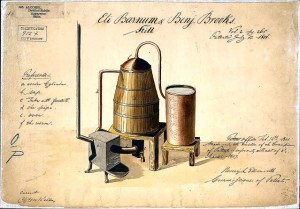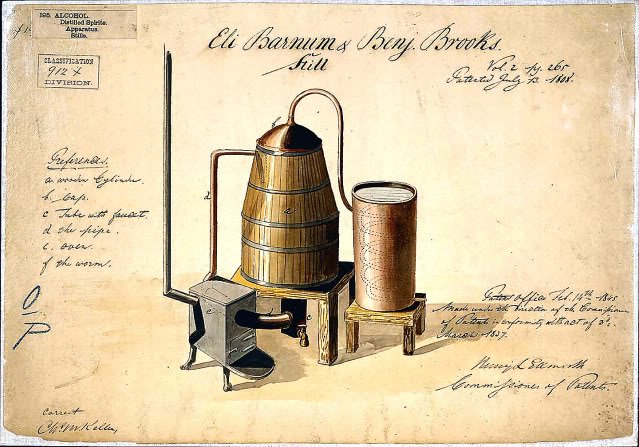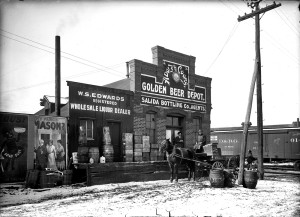By Tyler Grimes
For those who don’t know the distilling process, most of the local distilleries would likely be willing to give a basics 101 course. Here’s a brief overview of distilling and some of the differences between spirits, starting with single malt whiskey:
1. Malt barley is placed into a mash tun, and basically made into beer. Lenny Eckstein says whiskey starts as a “bulked-up porter.” The enzymes in the grain break down, the starch is converted to sugar, and the runoff is collected. Only a portion of the beer – “about 60 percent,” says Boathouse’s Jerry Mallett – goes on to become whiskey; what’s left over is beer and soaked barley. Many distillers keep the beer they make, but legally cannot sell it.
 2. The whiskey is then put in a fermentor, mixed with yeast, and allowed to sit for three to four days for a warmer fermentation. The barley, yeast, open air fermentation and temperature all contribute to the flavor of the whiskey. “You couldn’t make the exact same whiskey twice, even if you tried,” said Eckstein of all the variables in the process.
2. The whiskey is then put in a fermentor, mixed with yeast, and allowed to sit for three to four days for a warmer fermentation. The barley, yeast, open air fermentation and temperature all contribute to the flavor of the whiskey. “You couldn’t make the exact same whiskey twice, even if you tried,” said Eckstein of all the variables in the process.
3. The product is then put in the still and heated. As the “beer” heats, the alcohol boils at a lower temperature than the water and condenses on the top of the still. When it hits the copper, the alcohol cools and drips down until little by little it escapes the still. The process tones down the flavor and increases the alcohol content. The number of distillations is determined by the distiller, but usually it is distilled two or three times.
4. From there the whiskey, by law, has to be placed in some sort of barrel, even if only for one minute. Aged whiskey is placed in new American charred white oak barrels (by law) and allowed to age; the time depends on the distiller. The whiskey flows in and out of the wood with temperature and pressure changes, adding the barrel’s flavor to the whiskey. Eckstein said the flavor doesn’t come from the spirit or the barrel, but the interaction of the two.
Gin: Gin typically starts as a neutral grain spirit and flavors are added in distillation. “The majority of gin and vodka comes from two pharmaceutical companies which make it from ethanol,” says Mallett. The predominant flavor is juniper berries, but other botanicals are added during distillation depending on the distillers preference.
Some producers, like Deerhammer, prefer to make gin using a homemade base, like white whiskey. Others, like Wood’s, age the gin in barrels for a more unique flavor.
Rye whiskey: Rye whiskey can use a variety of grains but must be 51 percent rye to be considered rye whiskey.
Bourbon: Bourbon must be 51 percent corn-based whiskey, American made, and aged in new charred white oak barrels.
Brandy: Like beer is distilled to make whiskey, wine is distilled to make brandy.
Vodka: Any fermented product – grains, potatoes, even fruits – that is distilled is vodka.




